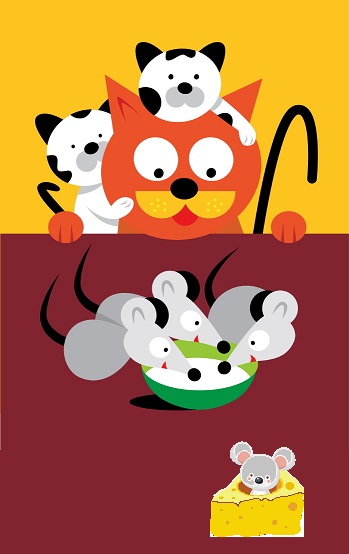And another one:
Now what happens if there are many mice, but the cat is only going to eat one? How do you tell someone which one he’s going to eat (provided you can)?

- Easy! You define the mouse. You say:
”Le chat va manger la souris grise.”
Yes, but they are all gray.They are all small.-
........... “Le chat va manger la petite souris.”- “Le chat va manger la souris… dans le fromage!”
Ah. We are getting somewhere. But unfortunately, this sentence is unclear. It rather means that the cat is going to eat the mouse inside the cheese. Lots of action if that cheese. Pretty big cheese too. Or pretty small cat, depending on how you look at it.
- Non, non! “Le chat va manger la souris du fromage!”Le chat va manger la souris et le fromage aussi?..........-
Arghhhh!
When you want to make an element of a sentence more specific, and a simple adjective won’t do, then what you need is something called “une subordonée relative“.
Subordonées relatives are, in reality, whole sentences acting as an adjective to a noun or a pronoun. They are like add-ons that you can attach to the subject or the object to say something more about it.
Let’s look at an example:
 LE CHAT A MANGÉ LA SOURIS LE CHAT A MANGÉ LA SOURIS
|
Aucun commentaire:
Enregistrer un commentaire